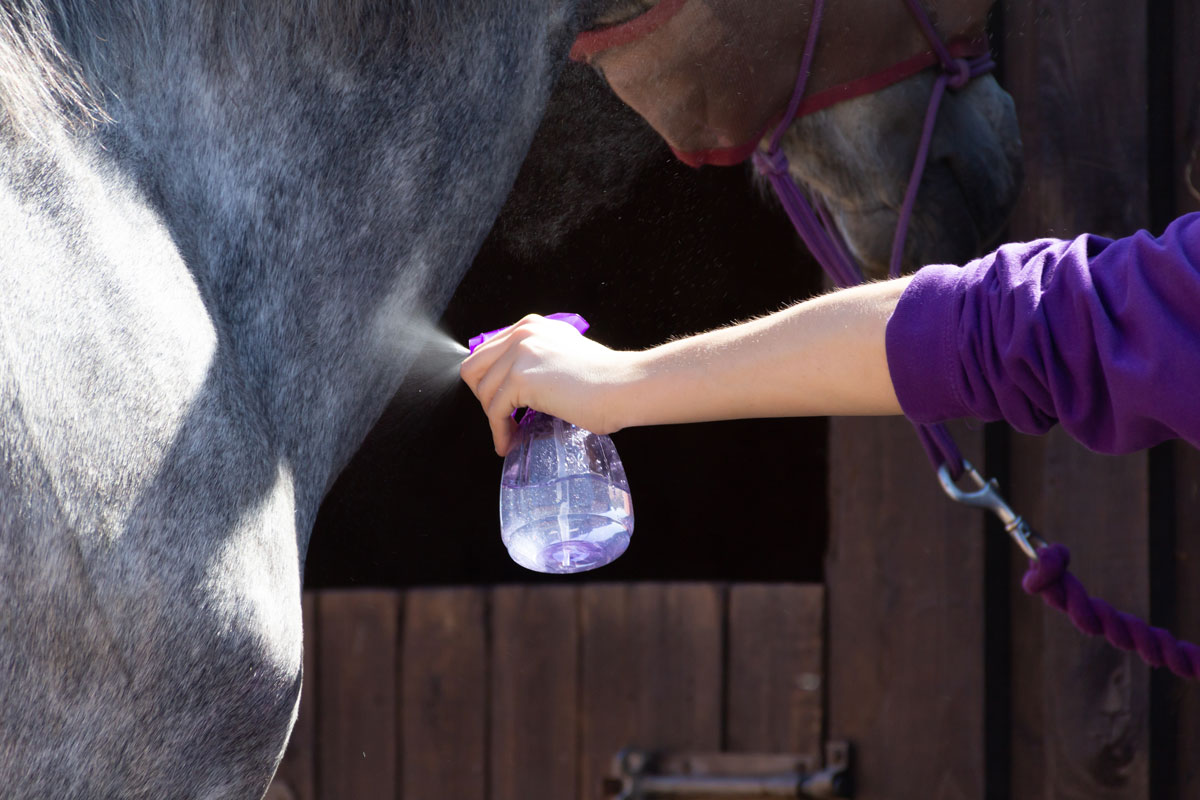
Horses hate bugs crawling on their sensitive skin. The disease-carrying insects that bite can also leave unsightly welts. Fly spray is a must for keeping horses comfortable and healthy. Unfortunately, not every horse is eager to see the spray bottle emerge. Fly spray isn’t cheap, so while training a horse you might want to practice with a water-filled spray bottle to avoid wasting spray.
As you start, remember that forcing a horse to stand still can increase his fear, according to Lisa Rakes, Captain of the Kentucky Horse Park mounted police. Rakes is one of the most decorated mounted police officers in the country, having trained the top-ranked Lexington Mounted Police unit horses and riders as the unit’s in-house trainer before taking over the Kentucky Horse Park mounted unit.
She said allowing horses to move their feet allows them to relax. The key is to control how the horse moves his feet, even if it is within a small circle.
“They are seeking comfort, and when they relax, stop moving their feet, etc. and the spray stops, then that can be their reward,” she said.
Try these three tips for helping you get your horse less sensitive to fly spray.
- Pick a location where the horse feels comfortable and is away from any hazards should the horse pull back or resist. “I put a halter and lead rope on the horse in a small area such as a stall and start spraying,” Rakes said.
- Stand at an angle at your horse’s shoulder.
- Start by spraying the topline, an area that tends to be less sensitive. “Allow him to move his feet in a small circle, but you must move with him and keep spraying in a relaxed posture,” Rakes said. “The second he quits moving his feet, stop spraying and let him think for 20-30 seconds. Repeat this until you can spray him from the very beginning without him moving his feet and call it a day for that exercise.”
- After the horse accepts having his back sprayed move on to his legs and full body.
- Don’t be surprised if the horse kicks his hind legs at the spray the first few times. This is a natural defense mechanism showing through.
It can be helpful to save this activity for after a training session. A tired horse is more focused on you and what you’re asking than the sights and sounds around him.
One point to keep in mind is that there are a variety of ways to get insect repellent on your horse, including wipes and spot-ons.



